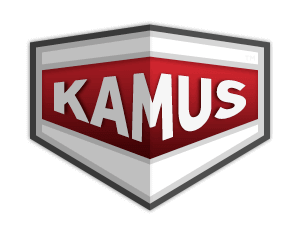grindgraɪnd
grind (v)
- present
- grinds
- past
- ground
- past participle
- ground
- present participle
- grinding
grind (n)
- plural
- grinds
English Definitions:
swot, grind, nerd, wonk, dweeb (noun)
an insignificant student who is ridiculed as being affected or boringly studious
grind (noun)
the grade of particle fineness to which a substance is ground
"a coarse grind of coffee"
drudgery, plodding, grind, donkeywork (noun)
hard monotonous routine work
grind, mill, pulverization, pulverisation (verb)
the act of grinding to a powder or dust
crunch, cranch, craunch, grind (verb)
press or grind with a crushing noise
grate, grind (verb)
make a grating or grinding sound by rubbing together
"grate one's teeth in anger"
labor, labour, toil, fag, travail, grind, drudge, dig, moil (verb)
work hard
"She was digging away at her math homework"; "Lexicographers drudge all day long"
grind (verb)
dance by rotating the pelvis in an erotically suggestive way, often while in contact with one's partner such that the dancers' legs are interlaced
grind, mash, crunch, bray, comminute (verb)
reduce to small pieces or particles by pounding or abrading
"grind the spices in a mortar"; "mash the garlic"
grind (verb)
created by grinding
"grind designs into the glass bowl"
grind (verb)
shape or form by grinding
"grind lenses for glasses and cameras"
grind (Noun)
A specific degree of pulverization of coffee beans.
grind (Noun)
A tedious task.
grind (Noun)
A grinding trick on a skateboard or snowboard.
grind (Verb)
To make smaller by breaking with a device.
grind (Verb)
To cause to rub together.
grind (Verb)
To rotate the hips suggestively.
grind (Verb)
To remove material by rubbing with an abrasive surface.
grind (Verb)
To slide the flat portion of a skateboard or snowboard across an obstacle such as a railing.
grind (Verb)
To repeat a task in a MMORPG or role-playing video game in order to gain levels or items.
grind (Verb)
To eat.
Grind
The grind of a blade refers to the shape of the cross-section of the blade. It is distinct from the type of blade, though different tools and blades may have lent their name to a particular grind. Grinding involves removing significant portions of metal from the blade and is thus distinct from honing and polishing. It is notably done when first sharpening the blade or when a blade has been significantly damaged or abused A well maintained blade will need less frequent grinding than one which is not treated well. The terms edge angle and included angle can be important when talking about grinding. The edge angle is measured between the surface of an edge and a line running from the point of the cutting edge to the centre of the back edge. The included angle is the sum of the edge angles. All other things being equal, the smaller the included angle the sharper the blade and the easier it is to damage the edge. An appropriate grind will depend upon what the blade is to be used for and the material from which the blade is made. Knife manufacturers may offer the same model of knife with different grinds on the blade and owners of a blade may choose to reshape it as a different grind to obtain different blade properties. A trade off exists between a blade's ability to take an edge and its ability to keep an edge. Various grinds are easier to maintain than others or can provide a better shape over the life of the blade as the blade is worn away by repeated sharpening. In material science terms, harder steels take sharper edges, but are more brittle and hence chip more easily, while softer steels are tougher, and are used for knives such as cleavers which must be tough but do not require a sharp edge. In the range of hardnesses used for knives, the relationship between hardness and toughness is fairly complex and high hardness and high toughness are often possible at the same time.
Grind
A blade's grind is its cross-sectional shape in a plane normal to the edge. Grind differs from blade profile, which is the blade's cross-sectional shape in the plane containing the blade's edge and the centre contour of the blade's back (meaning the shape of the blade when viewed from the side, i.e. clip point, spear point, etc.). The grind of a blade should not be confused with the bevel forming the sharpened edge; it more usually describes the overall cross-section of the blade, not inclusive of the beveled cutting edge which is typically of a different, less acute angle as the bevel ground onto the blade to give it a cross-sectional shape. For example, the famous Buck 110 hunting knife has a "hollow ground" blade, with concave blade faces (which aid in slicing through materials), but the cutting edge itself is a simple, flat-ground bevel of lesser angle. It would be difficult, if not impossible, to put a "hollow grind" onto the actual cutting edge of the blade itself, which is a very narrow and small bevel.
Citation
Use the citation below to add this dictionary page to your bibliography:
Style:MLAChicagoAPA
"grind." Kamus.net. STANDS4 LLC, 2024. Web. 25 Apr. 2024. <https://www.kamus.net/english/grind>.

Discuss this bahasa indonesia grind translation with the community:
Report Comment
We're doing our best to make sure our content is useful, accurate and safe.
If by any chance you spot an inappropriate comment while navigating through our website please use this form to let us know, and we'll take care of it shortly.
Attachment
You need to be logged in to favorite.
Log In